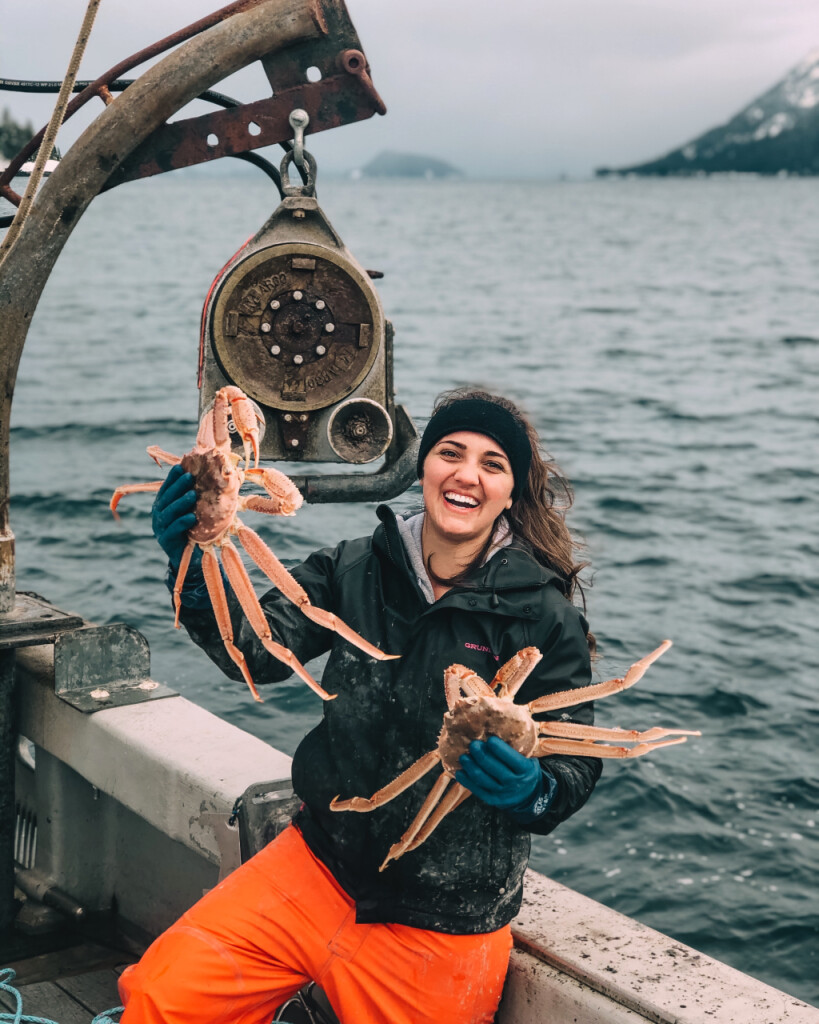A jaw-dropping $8.10 per pound is the advance price being paid to Kodiak fishermen for Tanner crab in the fishery that opened on Jan. 15.
High crab prices have led all other seafoods during the covid pandemic as buyers grab all they can to fill demand at buffet tables, restaurants and retail counters around the world.
“Our strategy was to get a price before the season even started. It's simply bad business to go fishing without a price,” said Peter Longrich, secretary of the 74-member Kodiak Crab Alliance Cooperative, which negotiated the deal with local processors.
Crabbers will drop pots for a combined total of 1.8 million pounds with 1.1 million pounds earmarked for Kodiak, 500,000 pounds for the South Peninsula and 200,000 pounds at Chignik.
The price compares to $4.25/pound paid in 2020 for a 400,000-pound harvest and $4.40/pound in 2019 for 615,000 pounds. No Tanner fishery occurred in 2021, as crabbers waited for more mature male crabs to grow into the fishery, the only ones that can be retained for sale. The legal crabs weigh over 2 pounds on average.
The waiting paid off. Since 2018, local biologists have been tracking one of the largest cohorts of Tanners ever seen throughout the westward region. It appears to be two big year classes with a broad range of sizes that could support several years of fishing, said Nat Nichols, area manager for the Alaska Department of Fish and Game at Kodiak.
“A Tanner crab is getting to be legal size around age 4 or 5, and then they start to die of natural causes or age out of the population by around 7 or 8. Once they start to become legal, we can expect them to hang around for potentially three years, and there'll be more small crab behind them. So you can kind of think of this as the front edge,” Nichols said.
Fishing is expected to go fast, depending on three factors: the number of boats, good or scratchy hauls, and weather. A total of about 85 boats were signed up for the fishery at Kodiak, 47 at the South Peninsula and 14 at Chignik. Nichols said the opener could be as short as three days, or it might last about a week.
Crabbers can expect a lot of measuring, he said, adding that a large group of crab are going to be “just short of the stick this year.”
“Those are next year’s crabs, and we want to handle them carefully and get them back in the water,” he said. “There will be a lot of sorting and if a pot has 30 or 40 legal male keepers in it, it may have 300 or 400 sublegal males and females mixed in there.”
The webbing in the pots also will add to the workload.
“If you have a groundfish pot that’s converted to a Tanner pot and it’s got small, 3-inch web or something like that, the only way for non-target crab to get out is to find one of the four escape rings. So that pot is likely to have quite a bit of juvenile and female crab in it,” Nichols explained. “If you have a pot with web that’s really big mesh, a lot of that small crab is going to walk right through and you’ll end up with a pot that's a lot cleaner.”
Another factor is how long the pots are soaked.
“If you’re turning the pots twice a day, you’re not really giving the crab enough time to filter out of the escape mechanisms. Whereas, if you only pull it once a day, potentially crab have up to 24 hours to find one of those rings and get out of the pot. Cleaner fishing is better for everyone, and those escaped crab are for the next few years of fishing. It’s the future of the resource.” Nichols added.
All pots in Alaska also are required to use twine that is biodegradable to allow crabs to escape in the event of lost gear.
The crab association also plans to try to market the catch as Kodiak Tanner crab, highlighting that it is bigger than Tanners from other Alaska regions and caught by local fishermen.







